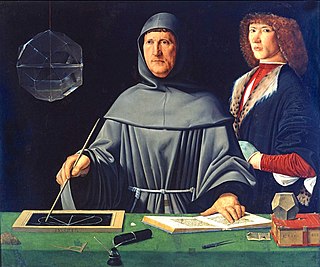
Bookkeeping is the recording of financial transactions, and is part of the process of accounting in business. Transactions include purchases, sales, receipts, and payments by an individual person or an organization/corporation. There are several standard methods of bookkeeping, including the single-entry and double-entry bookkeeping systems. While these may be viewed as "real" bookkeeping, any process for recording financial transactions is a bookkeeping process.

A cash register, also referred to as a till in the United Kingdom and other Commonwealth countries, is a mechanical or electronic device for registering and calculating transactions at a point of sale. It is usually attached to a drawer for storing cash and other valuables. The cash register is also usually attached to a printer, that can print out receipts for record keeping purposes.
Electronic data interchange (EDI) is the concept of businesses electronically communicating information that was traditionally communicated on paper, such as purchase orders and invoices. Technical standards for EDI exist to facilitate parties transacting such instruments without having to make special arrangements.
A false document is often promoted in conjunction with a criminal enterprise, such as fraud or a confidence game.

A scribe is a person who serves as a professional copyist, especially one who made copies of manuscripts before the invention of automatic printing.

A trade card is a square or rectangular card that is small, but bigger than the modern visiting card, and is exchanged in social circles, that a business distributes to clients and potential customers. Trade cards first became popular at the end of the 17th century in Paris, Lyon and London. They functioned as advertising and also as maps, directing the public to the merchants' stores.

In financial accounting, a cash flow statement, also known as statement of cash flows, is a financial statement that shows how changes in balance sheet accounts and income affect cash and cash equivalents, and breaks the analysis down to operating, investing, and financing activities. Essentially, the cash flow statement is concerned with the flow of cash in and out of the business. The statement captures both the current operating results and the accompanying changes in the balance sheet. As an analytical tool, the statement of cash flows is useful in determining the short-term viability of a company, particularly its ability to pay bills. International Accounting Standard 7, is the International Accounting Standard that deals with cash flow statements.
Stamp duty is a tax that is levied on documents. Historically, this included the majority of legal documents such as cheques, receipts, military commissions, marriage licences and land transactions. A physical stamp had to be attached to or impressed upon the document to denote that stamp duty had been paid before the document was legally effective. More modern versions of the tax no longer require an actual stamp.

Lucius Caecilius Iucundus was a banker who lived in the Roman town of Pompeii around 20–62 A.D. His house still stands and can be seen in the ruins of the city of Pompeii which remain after being partially destroyed by the eruption of Vesuvius in 79 AD. This house is known for its beauty, along with some material found about bank book-keeping and wax tablets, which were receipts. He is well known for being a central character in the Cambridge Latin Course series.

The Nuremberg Chronicle is an illustrated biblical paraphrase and world history that follows the story of human history related in the Bible; it includes the histories of a number of important Western cities. Written in Latin by Hartmann Schedel, with a version in German, translation by Georg Alt, it appeared in 1493. It is one of the best-documented early printed books—an incunabulum—and one of the first to successfully integrate illustrations and text.

General journal is a daybook or journal which is used to record transactions relating to adjustment entries, opening stock, accounting errors etc. The source documents of this prime entry book are journal voucher, copy of management reports and invoices.
An ATM card is a payment card or dedicated payment card issued by a financial institution which enables a customer to access automated teller machines (ATMs). ATM cards are payment card size and style plastic cards with a magnetic stripe or a plastic smart card with a chip that contains a unique card number and some security information such as an expiration date or CVVC (CVV). ATM cards are known by a variety of names such as bank card, MAC, client card, key card or cash card, among others. Most payment cards, such as debit and credit cards can also function as ATM cards, although ATM-only cards are also available. Charge and proprietary cards cannot be used as ATM cards. The use of a credit card to withdraw cash at an ATM is treated differently to a POS transaction, usually attracting interest charges from the date of the cash withdrawal. Interbank networks allow the use of ATM cards at ATMs of private operators and financial institutions other than those of the institution that issued the cards.
Michael Twyman is a Professor Emeritus of the Department of Typography & Graphic Communication at the University of Reading. He joined the university staff in 1959. He established a BA (Hons) course in Typography & Graphic Communication which eventually grew into its own department in 1974. Both the programme and the department are widely acknowledged to be the first of their kind in the world. He retired from full-time teaching in 1998 but still teaches postgraduate students and is also the Director of the Centre for Ephemera Studies.

In painting, staffage are the human and animal figures depicted in a scene, especially a landscape, that are not the primary subject matter of the work. Typically they are small, and there to add an indication of scale and add interest.

Special Journals are designed to facilitate the process of journalizing and posting transactions. They are used for the most frequent transactions in a business. For example, in merchandising businesses, companies acquire merchandise from vendors, and then in turn sell the merchandise to individuals or other businesses. Sales and purchases are the most common transactions for the merchandising businesses. A business such as a retail store will record the following transactions many times a day for sales on account and cash sales.
A compliments slip is a slip of paper that contains the same name and address information that would be on a letterhead of formal letter stationery, the pre-printed salutation "with compliments" or "with our/my compliments", and space afterwards for a short handwritten message to be added. It is used in correspondence, as an enclosure for other material.
John Lewis (1912-1996) was a printer, illustrator and collector of printed ephemera.















